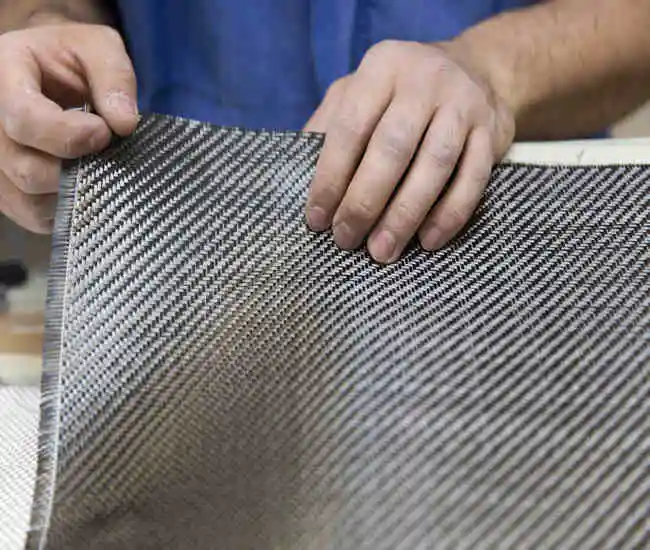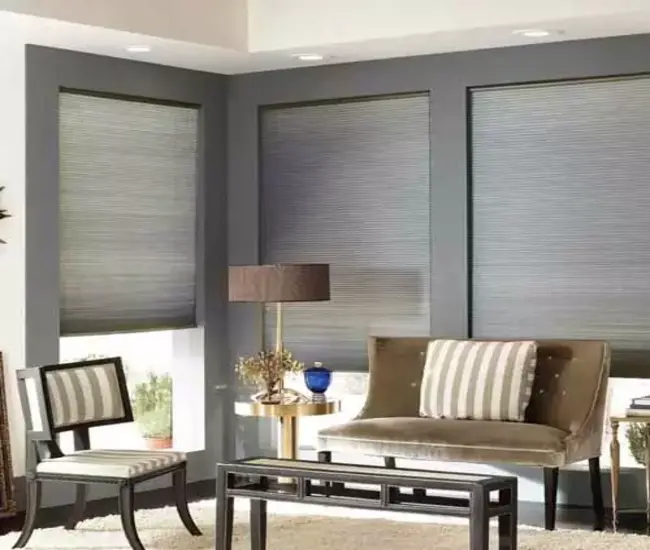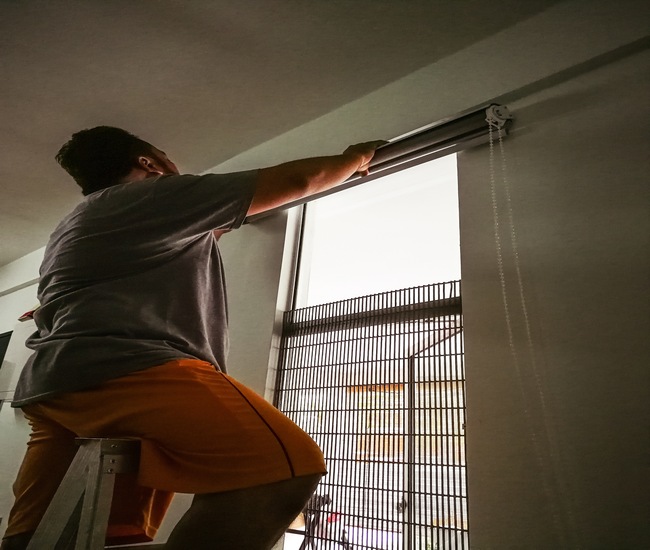Looking for easy, inexpensive solutions to insulate windows for summer and winter and save on cooling and heating costs? Investing in insulating honeycomb blinds, using a draft snake, applying weather stripping, hanging blackout curtains, and applying a reflective window film are some of the quick, inexpensive solutions to beat summer heat and winter cold.
Read on to discover 5 simplest and cheapest ways to insulate your windows for winter and summer. By using a suitable insulation method, you can make your interiors warmer and more comfortable. This article also includes tips on installing all four types of window treatments. Once you’ve finished the installation, you’ll be able to relax knowing your windows are insulated!
What are the 5 Simplest & Cheapest Ways to Insulate Your Windows for Winter and Summer?
There are different ways to insulate your windows for winter and summer. They include weather stripping, spray foam, and draft stoppers.
1. Use DIY Draft Stoppers
Draft stoppers for the insulation of your windows for winter and summer can be purchased at most home improvement shops – both at brick-and-mortar stores and online. These small devices are made from fabric tubes that have been cut to fit the window opening. You can use cotton or polyester fabric swatches to create the tubes or old pillowcases. These materials can be easily manipulated to fit the gaps, and they can be easily wedged into the windows to keep them from allowing any cold air inside.
You can also make a DIY draft stopper for the insulation of your windows for winter and summer from a scrap piece of fabric.
- First, sew the fabric into a tube.
- Use a needle and thread to stitch one end shut, leaving the other end open.
- Make sure that the fabric is right-side out and has a bit of room for stuffing.
- After you have placed the rice, you can sew over it.
- Make sure to stitch in a straight line, so that the seam is not visible.
You can also use an iron-on transfer sheet to make a fabric stopper. No matter what type of fabric you choose to use, ensure it is durable and flexible. Use iron-on transfer sheets with a 1/2-inch seam allowance on all sides. Once you have finished sewing your draft stopper, you can place it on your window. It will keep cold air out and save you money.
2. Use a Bubble Wrap
If you are looking for a simple and inexpensive way to insulate your windows for winter and summer, you can use bubble wrap. It is a fun and inexpensive material that can be applied to the window panes without the hassle of using tape or blow-drying. Bubble wrap can be applied to your windows in a matter of seconds and can be reused time after time. These tips will help you get the best out of bubble wrap window insulation.
Before insulating your windows, check the temperature of your home to determine how much air you can see through the window. Bubble wrap can help you keep the temperature in your home comfortable in cold weather while letting the light come in. Bubble wrap should be replaced every four to five years as it can degrade over time. To get the best results, replace bubble wrap as soon as the plastic begins to stick to the window.
Windows are the main reason that the house stays warm in winter. Older windows may lack insulation or special panes. As a result, cold air sneaks in. Bubble wrap can be used to add insulation between the house and the window. Using bubble wrap to insulate your windows will help you save on your energy bills. There are several other benefits to bubble wrap, but it is one of the simplest methods to insulate your windows.
3. Apply Fiberglass, Fiberboard, or Rigid Foam

Another inexpensive way to insulate your windows for winter and summer is to use fiberglass or other material between the window frames. Fiberboard or covered rigid foam are great for insulating window gaps, but they must be cut precisely. Window strips and bubble wrap are more difficult to cut than high-density foam and won’t offer the same level of insulation. And the fiberglass or bubble wrap you use has a lower R-value than high-density foam.
4. Thermal Curtains

One of the 5 great ways to reduce the cost of heating or cooling your home in winter and summer is to use thermal curtains. Not only do thermal curtains for the insulation of windows for winter and summer look great, but they can also help you save money on your utility bills. To choose the best thermal curtains, check out the following tips.
Curtains should be well-made, sized correctly, and hung close to windows. To maintain the highest insulation value, they should be placed close to the windows.
The length and width range of thermal curtains is 36 to 52 inches. It is recommended to cover the entire window casing with thermal curtains. To keep heat in and prevent drafts, they should be properly sealed. You should also use a valance to help keep out the cold. Thermal curtains can be easily installed, so make sure to follow these steps. Make sure the curtains are securely fastened by a closure. This can be done using Velcro strips or magnetic tape.
Before installing thermal curtains, measure both the window’s width and the fabric layers. When closed, thermal curtains should cover the entire window. Measure the length of the curtains so that they are long enough to cover the entire window. Alternatively, you can cut thermal curtains in half and hang two on each window to create a fuller look. Curtain rod brackets that can hold up to 20 lbs are required in order to hang them correctly.
5. Install Insulated Double Cellular Honeycomb Blinds

Also known as honeycomb blinds, cellular shades are window treatments that are made of two or more layers of fabric that form honeycomb-shaped cells. These cells trap air, which provides several insulation benefits for windows for winter and summer.
Insulating double cellular shades are excellent at reducing heat loss and gain through your windows in winter and summer. The trapped air in the cells acts as an insulator, which helps to keep your home cooler in the summer and warmer in the winter. This can lead to huge energy savings on your heating and cooling bills in winter and summer, respectively.
Overall, using cellular shades is one of the top 5 ways to insulate your windows for winter and summer. Also, they can help you to improve the energy efficiency, comfort, and privacy of your home.
Pros and Cons of Insulating Your Windows for Winter and Summer
Insulating windows can have several advantages and disadvantages. Some of them are listed below.
Pros
Improved Energy Efficiency
Using any of the 5 ways to insulate your windows for winter and summer can help to reduce heat loss and gain through your window openings, which can lead to lower energy bills and improved energy efficiency.
Enhanced Comfort
Insulating windows for winter and summer can also help to regulate the temperature inside your home, making it more comfortable throughout different seasons of the year.
Cons
Cost of Insulating Material

Insulating windows for winter and summer can be expensive, especially if you need to replace all the windows in your home. However, the energy savings and improved comfort can often offset this cost over time.
Installation Fees

Using 5 ways to insulate your windows for winter and summer can be a complex and time-consuming process, especially if you are replacing existing windows. It may also require professional installation.
Overall, 5 ways to insulate your windows for winter and summer can have several advantages for your home, but they may also have some disadvantages depending on your specific situation and preferences. It is important to weigh the pros and cons before making a decision about the choice of a method of the insulation of your windows.
FAQs
What is the best insulation for windows in hot weather?
Tightly closed, insulating cellular shades typically offer the best insulation for windows in hot weather, as they have the highest R-values (5+) of all windows. The air-filled pockets in the honeycomb cross-sections of the fabric act as excellent insulators, significantly reducing the conduction of heat through the window opening, and saving you up to 80% on the cooling costs.
What can I put on window to keep cold out?
Here’re some inexpensive options to put on window to keep cold out this winter:
- The simplest and cheapest way to keep cold air out is to tape the window with a clear plastic film.
- Invest in double cellular honeycomb blinds to keep cold out and maintain a warm interior.
- Seal the entire window with plastic.
- Apply v-seal weather stripping to seal out cold drafts, dust, and water.
- Seal the drafty areas around the window with a rope caulk.
Does bubble wrap on the window help in summer?
Yes, bubble wrap is an excellent insulator for summer windows. Bubble wrap can be easily applied to windows as insulation against heat and cold. Simply clean the window panes with water and lay bubble wrap against them to act as another layer of protection against the harsh sun. This window treatment will work to keep the hot out and cold in, helping you to maintain a comfortable interior and cut down on cooling costs.
Need More Help?
Still unsure about the best way to insulate your windows in summer and winter? Get in touch for free consultation! Use 24/7 live chat or give us a call at (800) 863-6109 to contact our design experts for custom or DIY insulating window treatment solutions.
